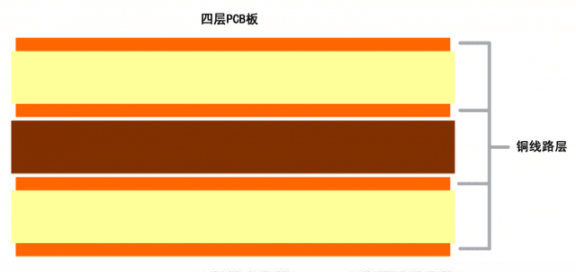What is the use of high-end memory multilayer PCB
The memory structure is simple, basically composed of DRAMIC and PCB circuit board. Therefore, the difference between high-end and low-end memory is mainly reflected in the two.
As DRAMIC, which occupies most of the cost of memory, its importance is of course needless to say. But among the few components of memory, PCB also plays an important role in memory performance.
If we pay attention to the details page of some high-end memory, we often see the term 8-layer PCB (multi-layer PCB) or 10-layer PCB. So what does this multilayer PCB, 8-layer circuit board or 10-layer PCB represent? Why does it mean that the memory materials are more advanced and the performance is better? Let's peel off the PCB circuit board today and take a look at the meaning of the number of layers of the circuit board.
PCB (PrintedCircuitBoard), the Chinese name is printed circuit board, also known as printed circuit board. It is an important electronic component, a support for electronic components, and a carrier for electrical connection of electronic components. It is a circuit board similar to a printed circuit board. In fact, the actual cable of different lengths is turned into a metal trace of a resin board, which greatly reduces the use of wires and saves space and energy consumption.

As we mentioned earlier, the PCB multilayer circuit board is a circuit board similar to the printing method, so common PCB multilayer circuit boards are glued together in several layers, and each layer has a resin insulating substrate and a metal circuit layer. .
The most basic PCB is divided into 4 layers of circuit boards, the upper and lower circuits are functional circuits, the most important circuits and components are arranged, and the middle two layers of circuits are the ground layer and the power layer. The advantage of this is that the signal line can be corrected and interference can be better shielded.
Generally speaking, 4-layer circuit boards can already meet the normal operation of PCB circuit boards, so the so-called 6-layer PCB, 8-layer circuit boards, and 10-layer circuit boards are actually adding more circuit layers to improve the electrical capabilities of the PCB., Which is the pressure-bearing capacity. Therefore, the increase in the number of multilayer PCB layers means that more circuits can be designed internally.
For memory, when do we need to increase the number of PCB layers? According to the above, it is obviously when the electrical power of the PCB circuit board is too strong or too high. When is the voltage and current of the memory PCB circuit board strongest? Players who have played overclocking will know that if the memory is to get better performance, it must be pressurized to increase the operating frequency. Therefore, it is not difficult for us to draw a conclusion: when the memory can be used at high frequency or overclocking.
At present, high-end memory frequencies generally start at 3600MHz. In order to ensure safety and electrical stability, 8-layer PCBs are basically standard, and some even reach 10 layers. In the same layout of PCB, the performance difference brought by 8-layer and 10-layer PCB is negligible for ordinary users, but for professional overclockers, the latter allows them to achieve higher frequencies.